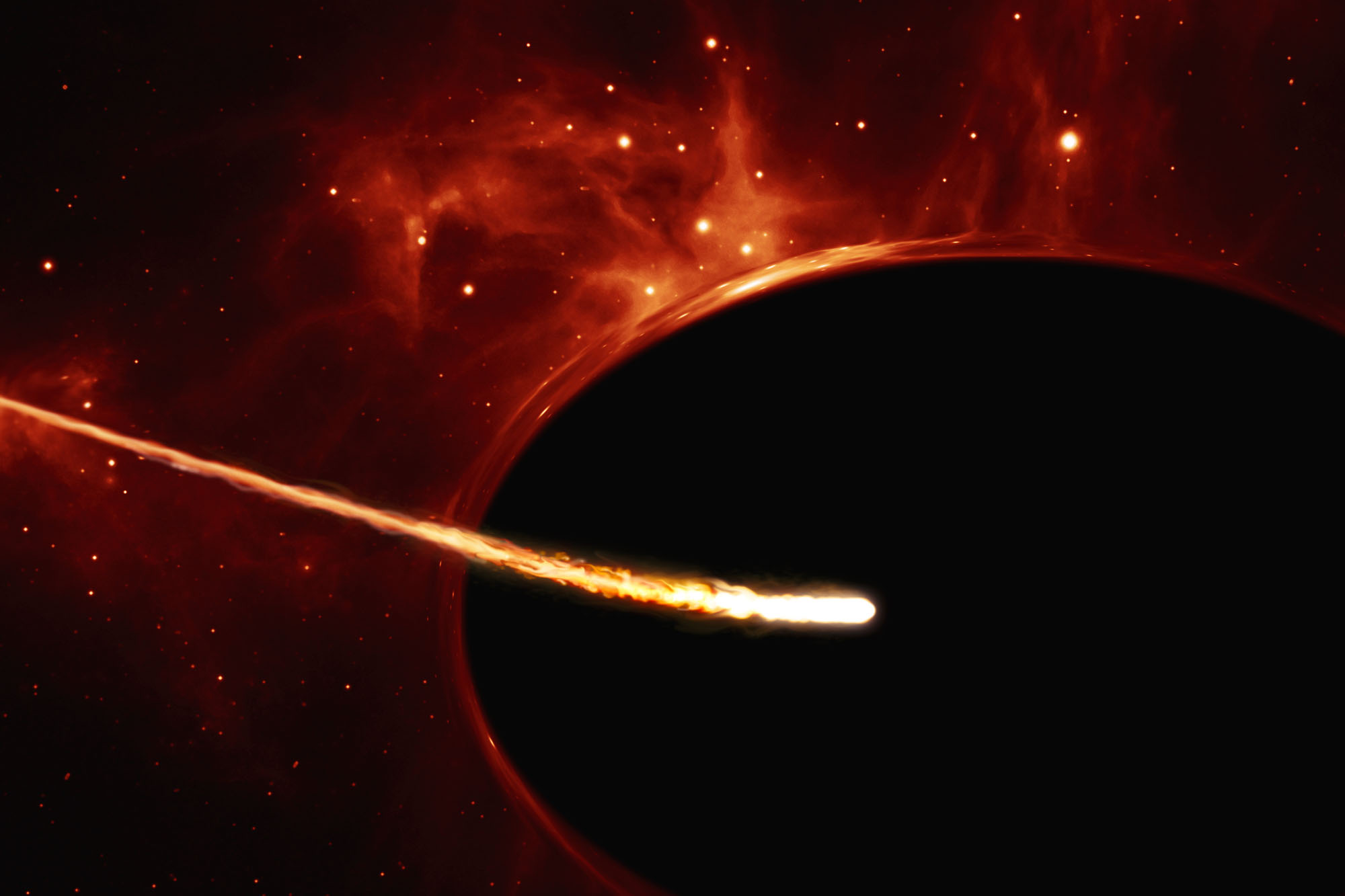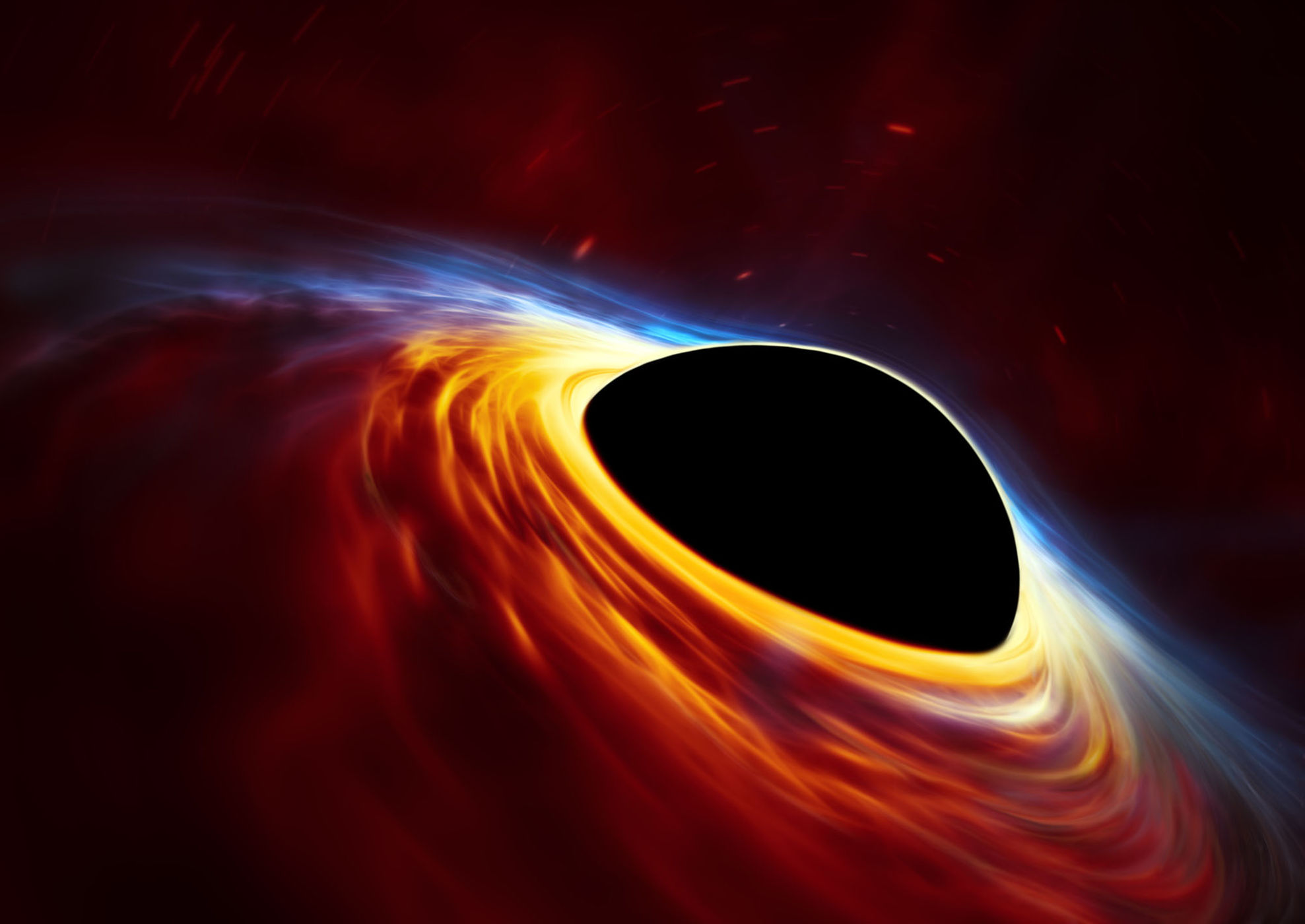
This artist’s illustration depicts a sun-like star being “spaghettified” by a supermassive black hole, which has the mass of 100 million times that of Earth’s sun. A new study found that this death by black hole was the fate of the ultra-bright supernova ASASSN-15lh.Credit: ESA/Hubble, ESO, M. Kornmesser
An incredibly luminous outburst that astronomers had previously classified as possibly the brightest supernova ever actually might have been caused by the explosive death of a star torn apart by a giant black hole, a new study finds.
Supernovas are explosions that can happen when stars die, either after running out of fuel or gaining a sudden influx of new material. These outbursts can briefly outshine all of the other stars in their galaxies.
Recently, scientists discovered a very rare class of supernova, known as superluminous supernovas. These explosions are up to 100 times brighter than other supernovas but account for less than one-thousandth of all supernovas.
In January, astronomers analyzing data from the All-Sky Automated Survey for Supernovae (ASAS-SN) reported discovering an outburst more than twice as bright as any known supernova. The explosion, named ASASSN-15lh, happened about 3.8 billion light-years from Earth, in the sky at the border of the southern constellations Indus and Tucana, and gave off about 570 billion times more light than the sun does at its peak.
Initially, scientists classified ASASSN-15lh as a superluminous supernova — indeed, the most luminous seen yet. However, researchers now think this explosion may actually have been the death throes of a star ripped apart by a supermassive black hole up to billions of times the mass of the sun.
A number of factors suggested that ASASSN-15lh was not a superluminous supernova. For instance, it occurred in a large, reddish galaxy, “a location where we should not find superluminous supernovae,” said lead study author Giorgos Leloudas, an astrophysicist at the Weizmann Institute of Science in Rehovot, Israel, and the Dark Cosmology Centre in Denmark. This kind of galaxy lacks the young massive stars that previous research suggested give rise to superluminous supernovas, he said.
Moreover, after gazing at ASASSN-15lh for 10 months of follow-up observations, Leloudas and his colleagues suggest that the way the explosion evolved over time “is not consistent with an expanding ball of gas,” Leloudas told Space.com. Instead of cooling down over time as supernovas are supposed to do, “this object, after 100 days, started warming up again, and stayed hot at a constant and very high temperature for a long time, and it continues to do so,” he said.

An artist’s illustration of a spinning supermassive black hole surrounded by an accretion disk containing the remains of a star shredded by extreme gravitational tidal forces. Credit: ESA/Hubble, ESO, M. Kornmesser
Instead, the researchers suggest that ASASSN-15lh may have been caused by a star disintegrating under the gravitational pull of a black hole — a so-called tidal disruption event. The composition of the elements seen in the explosion are more consistent with a tidal disruption event of a low-mass star than with a superluminous supernova, Leloudas said.
In addition, using images from the Hubble Space Telescope, Leloudas and his colleagues found that ASASSN-15lh occurred at the center of its galaxy. Previous research found that supermassive black holes reside in the center of virtually all known large galaxies. The researchers suggest that the supermassive black hole that may have caused this explosive outburst ranged from 200 million to 3 billion times the sun’s mass.
Prior work found that the supermassive black hole at the center of ASASSN-15lh’s galaxy was so big that it would have swallowed a star whole instead of ripping it apart. Using new models, Leloudas and his colleagues have discovered that a rapidly whirling supermassive black hole could rend a star to pieces instead of gulping it down whole.
Only about 10 tidal disruption events have been discovered, the researchers said. This new finding may demonstrate that “tidal disruption events show a much larger diversity than what we knew before, and that they can reach extreme luminosities,” Leloudas said.
Leloudas cautioned that they cannot say with complete certainty that ASASSN-15lh was a tidal disruption event, and that they cannot explain every detail of what they observed. Still, “this is how science advances — now, more clever people can look at the data we publish and come up with theories that can explain the missing pieces,” he said.
The scientists detailed their findings online Dec. 12 in the journal Nature Astronomy.
